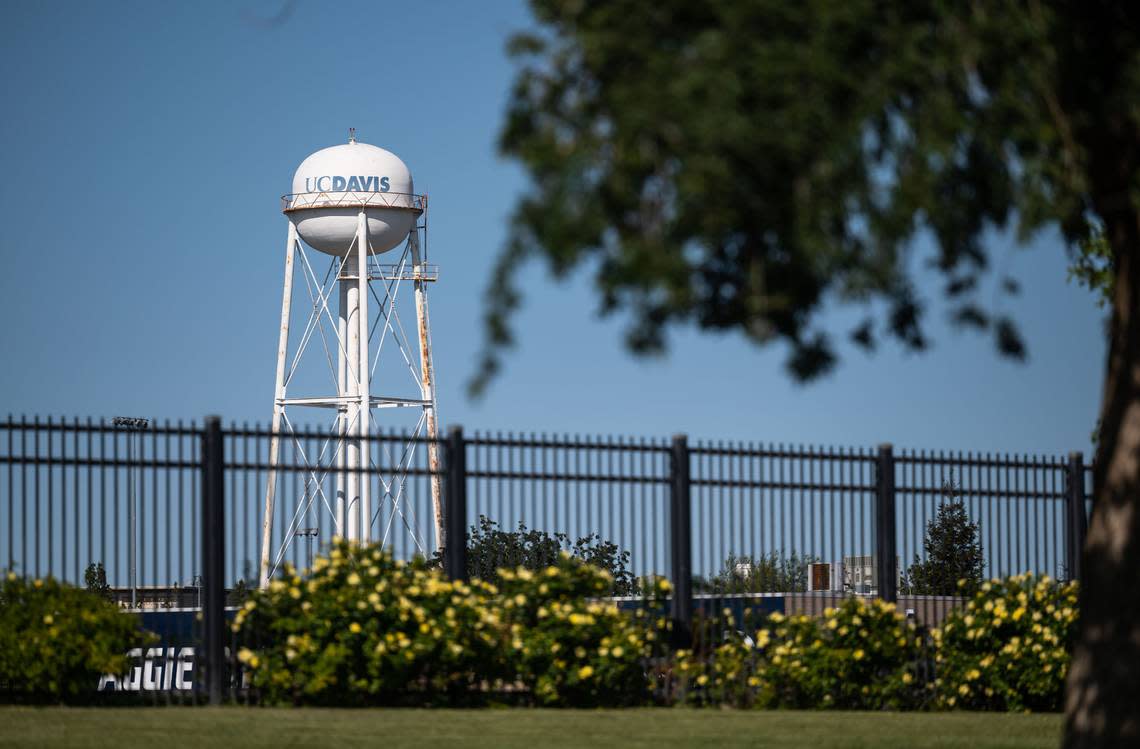University of California admits ‘largest and most diverse class in history’ for fall 2024

The University of California admitted a record number of students for the 2024-25 school year, accepting about 70% of all hopeful applicants. The public university system is calling this year’s admitted cohort its largest and most diverse class in history.
UC offered spots to a total of 166,706 students — 137,200 first-year and 29,506 transfer students. Around two-thirds of the first-year admissions were of California residents, according to a UC admissions report.
In recent years UC has prioritized admitting and enrolling California residents to meet state goals. In 2022, Gov. Gavin Newsom agreed to provide UC and the California State University system annual funding increases over five years in exchange for the two institutions to work toward enrolling more in-state students and increasing graduation rates.
UC also boasted a more diverse group of admitted students racially and economically. The pool of admitted freshmen includes the highest ever proportion of students from underrepresented groups (African American, American Indian, Latino and Pacific Islander) at 45.4%, representing a 1% increase over last school year.
“We’re setting more California students on the path to a college degree and future success, and that translates to positive impact on communities throughout the state,” said UC President Michael V. Drake, who on Wednesday announced he would step down from the 10-campus system at the end of the 2024-25 academic year.
Some schools saw a higher increase in admissions than others — UC Davis is on the lower end of the spectrum, showing a 5.1% increase of admission offers from the year before. Only UCLA and UC Berkeley saw lower rates of change, with the latter being the only campus to offer 3% fewer admissions this year. That said, UC Davis was third in terms of cumulative offers made (51,312), behind UC Santa Cruz and then UC Riverside by just 33 offers.
UC Davis made big strides in terms of admitting a more diverse class, but still lags behind the rest of the system. The number of offers made to students from underrepresented groups increased by 7.7% over last year and makes up 34.5% of offers made this year. However, this proportion trends toward the bottom of range, with the entire UC system offering around 45% of admissions to underrepresented groups.
Students admitted to UC Davis represent 57 of California’s 58 counties and more than 100 countries around the world. In total, the school made offers to over 51,000 students and expects to enroll around 9,600 new undergraduates this fall. Because California residents, who account for 65% of the university’s admitted students, accept offers of admission at higher rates than nonresident students, they will make up a higher percentage of the freshmen population come fall.
“UC Davis has admitted a bright, talented and diverse entering class,” said Robert Penman, executive director of Undergraduate Admissions. “We are pleased to continue to make progress in representing the population of California. At the same time, we’re also pleased to see increased geographic diversity with admitted students from throughout the U.S. and the world.”
Here are other key facts from the admissions report:
▪ Women continue to make up the majority of admissions within the UC system at 55%. At Davis, just 36% of admission were offered to men, 2% to nonbinary students and 4% to unknown/other identities.
▪ UC Berkeley offered the fewest admissions this year at 19,155. This number represents a negative 3% change over last year.
▪ 5,500 of admitted California freshmen were Black, up 5% from last year. UCLA accepted the highest proportion of Black freshmen at 8%, while UC Davis, San Diego, Santa Barbara and Santa Cruz all tied at 4%.
▪ 43% of offers were made to California freshmen who would be the first in their family to attend college.
▪ UC saw a significant increase in applications from community college students following a pandemic-driven lull. There were 26,430 offers made to students from junior colleges, representing a 7.8% increase from the previous year.

